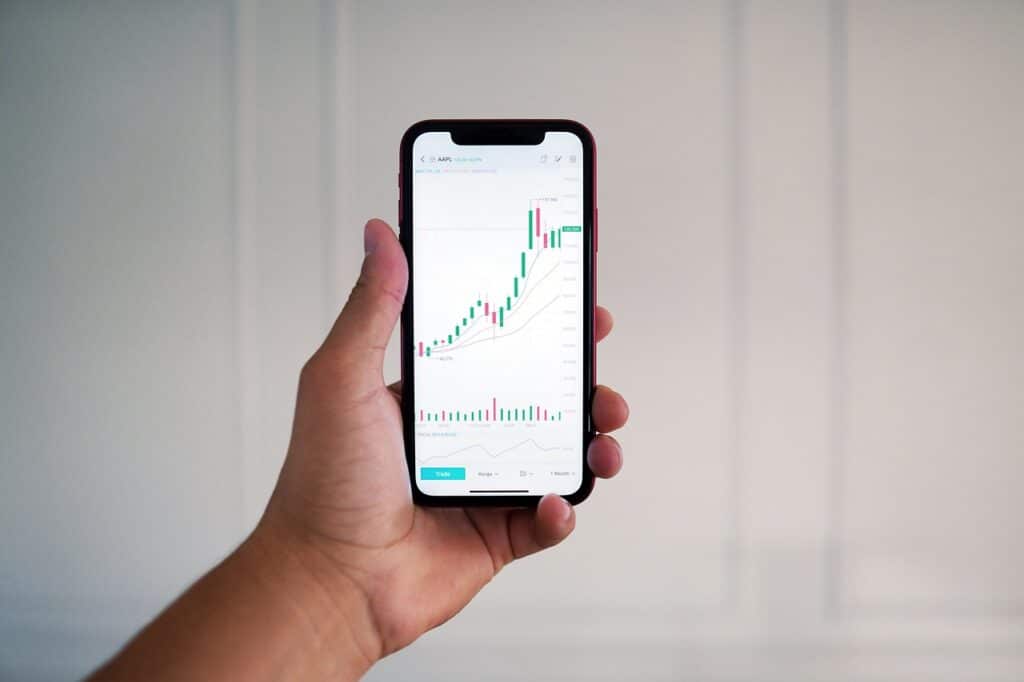In today’s interconnected world, innovation knows no boundaries. The traditional model of closed innovation, where organizations relied solely on their internal resources to develop new ideas, has evolved. Enter open innovation, a paradigm that embraces collaboration and knowledge sharing both within and beyond organizational boundaries. Open innovation has had a profound impact on the world of patents and intellectual property. This article delves into the fascinating intersection of patent valuation and open innovation, exploring the methods, challenges, and opportunities that define the valuation of intellectual property in this new era.
Understanding Open Innovation
Open innovation is a concept championed by Henry Chesbrough, which signifies the collaborative approach to innovation. It acknowledges that not all the smart people work for one organization. In an open innovation model, organizations actively seek external ideas, technologies, and expertise as they work to develop new products and solutions. This shift toward open innovation has created a dynamic ecosystem of collaboration, where knowledge flows freely, and partnerships are forged across industry boundaries.

The Impact of Open Innovation on Patents
Open innovation has brought about a seismic shift in the intellectual property landscape. Organizations now collaborate, license, and share their intellectual property more readily than ever before. This shift is driven by several factors:
Diverse Sources of Innovation
Open innovation widens the pool of potential innovation sources. Rather than relying solely on in-house R&D, organizations can tap into a global network of inventors, startups, research institutions, and partners. This diverse range of sources often leads to a surge in intellectual property generation.
Enhanced Market Position
Participating in open innovation can bolster an organization’s market position. By collaborating with external partners, organizations can access complementary technologies, expand their product portfolios, and gain a competitive edge.
Risk Mitigation
Open innovation can be a strategic way to mitigate risk. Sharing the burden of R&D and technology development with partners spreads the risks and costs associated with innovation.
Faster Time-to-Market
Through open innovation, organizations can expedite their time-to-market. By leveraging existing technologies or working with partners who have complementary expertise, they can bring new products and services to market more rapidly.
The Complexity of Patent Valuation in Open Innovation
While open innovation brings numerous benefits, it also introduces complexities when it comes to patent valuation:
Multiple Stakeholders in Open Innovation
In open innovation ecosystems, the participation of multiple stakeholders is not an exception but a rule. Collaborative innovation thrives on the contributions of diverse partners, which often leads to jointly owned intellectual property. This shared ownership presents a multifaceted challenge in the valuation of patents. To determine ownership, valuation experts must embark on a nuanced journey, dissecting the specific contributions of each stakeholder. They assess the uniqueness and significance of each party’s input and its role in the overall innovation. This intricate process requires both legal expertise and negotiation skills to establish equitable terms among collaborators. Ownership agreements, which explicitly define the rights and responsibilities of each party, are essential in this context. These agreements lay the foundation for a fair distribution of ownership and the associated value of patents. Furthermore, they ensure that collaborative efforts do not lead to disputes over ownership rights, thereby preserving the integrity of open innovation initiatives.
Cross-Industry Collaborations in Open Innovation
Open innovation’s hallmark is its propensity to bridge industry boundaries, fostering cross-industry collaborations. While this diversity of thought and expertise can lead to groundbreaking innovations, it also introduces a unique challenge in patent valuation. Each industry has its valuation standards and methodologies, reflecting the distinct dynamics of their respective markets. When these industries come together in a collaborative partnership, it becomes necessary to harmonize these varying approaches to determine the worth of intellectual property. Valuation experts must possess an acute understanding of the specific industry norms and the market reach of the innovation under consideration. They need to navigate the complexities of assessing how a patent’s value may vary across different sectors. This calls for a comprehensive analysis of market trends, an understanding of industry-specific drivers, and the identification of relevant comparables. It’s not merely a matter of applying a uniform valuation method; rather, it’s about creating a tailored approach that accounts for the intricacies of cross-industry collaborations.

Rapid Intellectual Property Generation in Open Innovation
In the age of open innovation, intellectual property is generated at an extraordinary pace. The accelerated rate of innovation stems from the collaborative, knowledge-sharing nature of open ecosystems. Intellectual property generated in such environments demands a valuation approach that can keep up with this rapid pace of change. Valuation experts must be agile and adaptable, as they continuously reassess the value of patents to capture the dynamic nature of open innovation. This process extends beyond a one-time assessment. Instead, it involves real-time monitoring and reassessment, ensuring that the valuation reflects the current state of the innovation landscape. It requires the integration of data-driven approaches that leverage real-time data, market insights, and changing collaborative partnerships. By staying informed about the release of new versions or iterations of a product or technology, evolving market conditions, and the shifting landscape of open innovation, valuation experts can provide accurate assessments of patent values. This dynamic approach is essential for organizations participating in open innovation to make informed decisions and maintain a competitive edge in the rapidly evolving knowledge-based economy.
Methods for Valuing Patents in Open Innovation
Valuing patents in an open innovation context requires a nuanced approach. Traditional valuation methods, such as the cost approach, income approach, and market approach, remain relevant but must be adapted to suit the collaborative nature of open innovation. Here’s how these methods play out in this context:
Cost Approach
In the open innovation paradigm, the cost approach remains fundamental but may involve shared development costs. Valuation experts need to account for expenses incurred by multiple parties and determine how these costs affect the overall value of the intellectual property.
Income Approach
The income approach evaluates the future revenue generated by a patent. In open innovation, this method needs to account for revenue-sharing agreements and licensing terms. The collaborative nature of open innovation may lead to revenue being distributed among multiple stakeholders, and the income approach must consider these complex revenue-sharing arrangements.
Market Approach
The market approach relies on market data and comparable transactions to assess the value of a patent. In open innovation, this method should consider the influence of cross-industry collaborations on market dynamics. The value of a patent may vary significantly based on the industry and the nature of the collaborative partnerships, requiring valuation experts to carefully analyze market trends and identify relevant comparables.
Open Innovation Ecosystems and Patent Valuation
Open innovation has redefined the landscape of intellectual property and patent valuation. In open ecosystems, intellectual property is generated at an unprecedented pace, with collaboration and shared ownership becoming the norm. Valuation experts operating in this environment must be agile, adaptable, and equipped to navigate the complexities introduced by multiple stakeholders and cross-industry collaborations.
As open innovation continues to drive progress and innovation, the valuation of patents within this context will play an increasingly pivotal role. It will guide organizations in their collaborative endeavors, support fair compensation for intellectual property contributions, and help establish a standardized approach to patent valuation that accommodates the intricacies of open innovation. As the world of intellectual property adapts to the era of open innovation, the valuation of patents stands as a critical bridge between innovation and its economic impact.
Navigating the Challenges of Open Innovation in Patent Valuation
The era of open innovation has introduced a host of challenges to the process of patent valuation, necessitating a deeper understanding of these complexities and a more flexible approach to intellectual property assessment.
Ownership and Collaboration
In open innovation, intellectual property generation often involves a multitude of contributors. This collaborative nature can result in shared ownership of patents, where multiple organizations or individuals hold a stake. Determining the true ownership and the respective value of these shared patents is a formidable challenge. Valuation experts must carefully dissect the contributions of each stakeholder, evaluating the uniqueness and significance of their input to arrive at a fair assessment of ownership and value. This process often involves a combination of legal expertise, negotiation, and consensus-building to establish equitable terms among collaborators.
Cross-Industry Collaboration
One of the defining features of open innovation is the willingness to collaborate across industry boundaries. This cross-pollination of ideas and technologies can lead to groundbreaking innovations with multifaceted applications. However, it also introduces complexities in patent valuation. The value of a patent generated in a cross-industry collaboration may vary widely based on the industry’s norms and standards. Valuation experts must be adept at understanding the specific dynamics of each industry involved, as well as the potential market reach of the innovation. This nuanced approach is crucial for assessing the true value of patents with diverse applications.
Dynamic Intellectual Property Generation
In open innovation ecosystems, intellectual property is generated at a remarkable pace. This accelerated rate of innovation requires valuation experts to adapt quickly and continuously reassess the value of patents. The valuation process is no longer a one-time assessment but an ongoing effort to capture the dynamic nature of open innovation. Experts must consider factors such as the release of new versions or iterations of a product or technology, evolving market conditions, and changing collaborative partnerships. This real-time valuation approach demands a combination of data analytics, market research, and a deep understanding of the innovation landscape.
The Role of Intellectual Property Strategy
Navigating the complexities of open innovation in patent valuation requires a well-defined intellectual property strategy. Organizations must consider how they approach intellectual property in the context of collaboration. This strategy should encompass the following key elements:
Ownership Agreements: Ownership agreements are foundational to maintaining clarity and fairness in open innovation collaborations. These agreements, established at the inception of collaborative efforts, should delineate the terms and conditions of ownership. They should address shared ownership scenarios, outlining the rights and responsibilities of each party involved. Licensing terms and revenue distribution should also be clearly defined, ensuring that the benefits of intellectual property are distributed equitably among collaborators. Well-crafted ownership agreements serve as a crucial framework for avoiding disputes and conflicts over ownership rights, allowing organizations to preserve the integrity of their collaborative initiatives.
Licensing Models: Developing licensing models tailored to the collaborative nature of open innovation is essential for ensuring fair compensation for intellectual property contributions. These models must account for the diverse stakeholders involved and the roles they play in the innovation process. They should facilitate equitable benefits for all parties by defining licensing terms that reflect the value of the intellectual property. By embracing licensing models that are inclusive and transparent, organizations can foster trust and cooperation among collaborators, ultimately contributing to the success of their open innovation endeavors.
Data-Driven Valuation: Embracing data-driven valuation processes in the context of open innovation is paramount. These processes rely on real-time data and market insights to assess the value of intellectual property. By continuously monitoring the innovation landscape and market conditions, organizations can adapt to the rapid pace of open innovation. Data-driven valuation allows for informed decision-making, enabling organizations to seize opportunities, respond to market shifts, and optimize their intellectual property strategies. In a dynamic open innovation ecosystem, real-time data becomes an invaluable asset in the quest for accurate and timely patent valuation.
Legal Expertise: Engaging legal experts with specific experience in intellectual property and open innovation is a strategic imperative. These experts possess a deep understanding of the legal intricacies surrounding shared ownership and cross-industry collaborations. Their guidance ensures that organizations navigate these complexities effectively, mitigating legal risks and safeguarding their intellectual property rights. Legal expertise in open innovation is not only about compliance but also about maximizing the potential of collaborations while upholding the integrity of intellectual property assets.
Continuous Monitoring: Implementing a system for continuous monitoring and reassessment of patent values is essential in the open innovation landscape. This ongoing process involves staying informed about changes in the innovation landscape, market trends, and evolving collaborative partnerships. It allows organizations to adapt to the rapidly evolving knowledge-based economy, ensuring that their patent valuations remain accurate and reflective of the current state of the intellectual property landscape. Continuous monitoring is a proactive approach that empowers organizations to make informed decisions and maintain a competitive edge in the dynamic world of open innovation.

The Future of Patent Valuation in Open Innovation
As open innovation continues to shape the landscape of intellectual property, the valuation of patents will remain a critical and evolving discipline. The challenges introduced by open innovation, from shared ownership to rapid innovation cycles, require valuation experts to embrace flexibility, adaptability, and a deeper understanding of collaboration dynamics. The future of patent valuation in open innovation holds the promise of more accurate and dynamic assessments, reflecting the true value of intellectual property generated in a collaborative, interconnected world. Ultimately, patent valuation in the age of open innovation serves as a vital bridge between innovation and its economic impact, fostering progress, and driving the knowledge-based economy forward.

